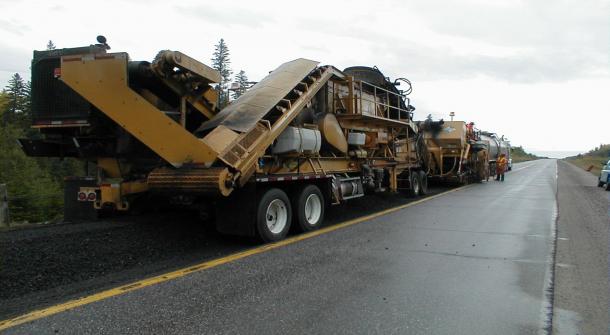Deterioration of roads is a common problem for many large cities and communities all over Australia. Another problem are maintenance and costly road repairs. That’s why many cities and local officials are turning towards the process of road recycling. The process of road recycling is one useful and effective way of upgrading and maintaining existing roads and highways. It is an effective, natural, fast and economical solution for damaged roads and highways.

With road recycling, old and worn asphalt pavements are removed and recycled for another usage. The old asphalt is first pulverized by road recycler the mixed with other materials and compacted with appropriate compaction machine. This way new, strong and durable base for asphalt surface is created which will be used over the next years. The entire recycling process is less expensive when compared with the process of constructing a brand new road surface, because less equipment and less labour is required. The recycling procedure is very simple and all six steps can be completed in one day, depending on the length of the road.
Road Investigation. The recycling process begins with thorough examination of the road to identify the causes of failure. Test holes are made in the road are made and samples are taken to determine the thickness of the road. Road samples include:
- portion of the deteriorated asphalt surface
- the base course aggregate, and
- samples of the sub soil.
Laboratory Testing. Once the thickness has been determined, a laboratory testing and evaluation is required to determine the density and the moisture level of the recycled material. This helps create an aggregate soil mix similar to the recycled material which will be applied on the surface.
Pulverization. The first recycling action is pulverizing the old and deteriorated asphalt pavement by using a special machine, road recycler. The type of road recycler that is going to be used depends on the nature of the work and the length of the road that is under construction. A road recycler usually comes with a metal body that is attached either on tracks or on wheels. To ensure efficient pulverization, more than one pass with the road recycler is required. Usually the depth of the pulverization is between 150-300mm, depending on the conditions of the road.
Grading. Pulverized asphalt material is then being shaped with a grading machine. This step can involve additional work for creating the base of the surface. The final elevation of the surface may require some materials to be removed or added.
Water Application. Water is being added to the asphalt material that is being pulverized and graded to achieve required moisture level. Water is usually added when the pulverized material is too dry.
Compaction. Once the mix has been created, the recycled material is compacted to get the desired density level. Usually a drum roller is used for more effective compaction, but for some projects, wheel rollers may be as efficient. The final compaction of the recycled material should take place no more than 3 hours after the recycled mixture is being applied to the surface.
Re-Surfacing. At the end, a hot bitumen emulsion is applied to the surface by a special construction lorry. High quality chips are inserted on the top of the bitumen, and a final compaction is performed. This way the rehabilitation of the road is completed and is ready for use.






















